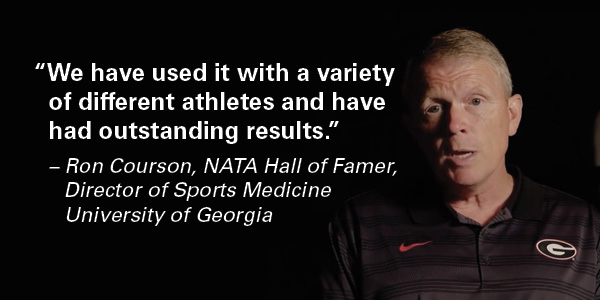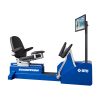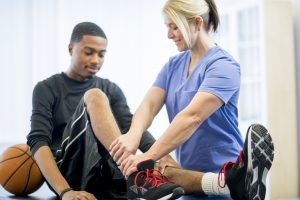
Virtual Conferences for Athletic Training and Rehab Professionals
Practice ManagementLike many of my fellow ATCs, this was my first time attending a virtual conference. But I expect it won’t be the last. Keep reading for what I learned from the NATA's first virtual conference.
This July, the National Athletic Trainers Association held its first virtual conference. The live event was slated to be in Atlanta, but 2020 had other plans. With COVID-19 disrupting travel and social gatherings, the NATA became one of many organizations facing a difficult situation. Rather than outright cancel the show, the NATA decided to move to a virtual platform for Athletic Trainers to gather and learn about current trends in the industry.
Without the obstacles of domestic or international travel, Athletic Trainers from all over the world joined the conference this year. The conference hosted attendees from China, Japan, Taiwan, the UAE, Canada, Ireland, UK and the Bahamas, in addition to thousands of United States-based attendees.
Like many of my fellow Athletic Trainers, this was my first time attending a virtual conference. But I expect it won’t be the last. Since the COVID-19 pandemic changed the way we live and work, virtual conferences may be the norm for the foreseeable future. Keep reading for my take on the virtual experience and how ATCs can continue to be effective during these changing times.
Navigating a Virtual Conference
Learning sessions were organized similarly to that of a live conference. At dedicated times, new sessions would be held in one of five virtual rooms. These presentations were an excellent way for Athletic Trainers to earn much needed Continuing Education Credits at a fraction of the cost of a live event.
This year’s presentations were handled in the same manner as a live event. One of our esteemed colleagues would act as a session moderator and then proceed to introduce the presenters. There were also rapid fire sessions.
VNATA Session Topics
This year, VNATA session topics ranged from injury management to social activism. One presentation was on the Adaptation of Overhead Athletes where Dr. Tim Uhl, (PhD, University of Kentucky) started off the session with statistics and trends on how the shoulder adapts to years of throwing. Additional presentations continued to expand on the biomechanics and tissue response to overhead stress.
Additional presentations continued to show the wide scope of Athletic Trainers’ abilities to make a difference in various settings like industry and the military. Social issues related to race, gender, and sexual orientation were also included in this year’s offering. And, of course there were countless discussions on recognizing and managing injuries that are common place in the active and athletic population.
Participating in a Virtual Expo
We’ve participated in countless in-person expos, so transforming our booth experience to a digital platform was completely new for us. Rather than planning interactive games or demonstrations, we rounded up our best digital content for athletic trainers and made them available in the booth.
As a conference attendee at the virtual expo, I enjoyed getting to explore the other booths at my own pace. There were plenty of booths to choose from, and we had time to visit the expo outside of the session schedule. Unfortunately a technical glitch temporarily disabled the live chat option, which is a valuable tool for both exhibitors and attendees. But we are all learning to navigate this new environment together, and overall, the virtual expo was a great experience.
BTE’s Message: Eccentric Exercise Works!
At BTE, we advocate the use of eccentric exercise in both rehab and training. It works because it is functional and it is necessary for basic daily activities. All of us, from workers to athletes to the elderly, rely on eccentric movements and need them for better performance. In fact, multiple presentations in this year’s virtual expo also emphasized eccentrics in both return to function/play and injury prevention.
In our booth, we provided several resources that show the importance of eccentric exercise, spotlighting our premiere product for athletic trainers, the BTE Eccentron. The Eccentron is an eccentric-only, closed-chain system which strengthens the lower extremities under a variable load. It is safe and effective for both injury recovery and for high-power training. It’s so effective for athletic training that the Houston Rockets dubbed it an essential component of their strengthening and conditioning program inside the exclusive NBA Bubble.
Get the E-book on Eccentrics in Training and Rehab
During the conference, we received dozens of requests for our ebook, ACL Recovery Unlocked with Eccentric Strengthening and Motor Control. If you haven’t already, get your copy today. Catch up with today’s leaders in professional and collegiate athletic training. You’ll get new EMG research, ACL case studies, and pro tips from Ron Courson, UGA Director of Sports Medicine, and more!

Virtual Conferences Are Here To Stay
The COVID-19 pandemic has drastically changed the landscape for athletic trainers. I believe we’ll continue doing virtual conventions for the foreseeable future. They allow healthcare providers the opportunity to gain knowledge in their field without the need to travel, lowering costs for both attendees and exhibitors.
Keeping up with this trend, BTE has added more opportunities for digital engagement. Check out our YouTube channel for the latest rehab and training techniques. You’ll find topics like eccentrics for COVID-19 recovery and Continuous Passive Motion (CPM) with Target Force.
Jeff Johnson, MA, ATC
Clinical Specialist
BTE





